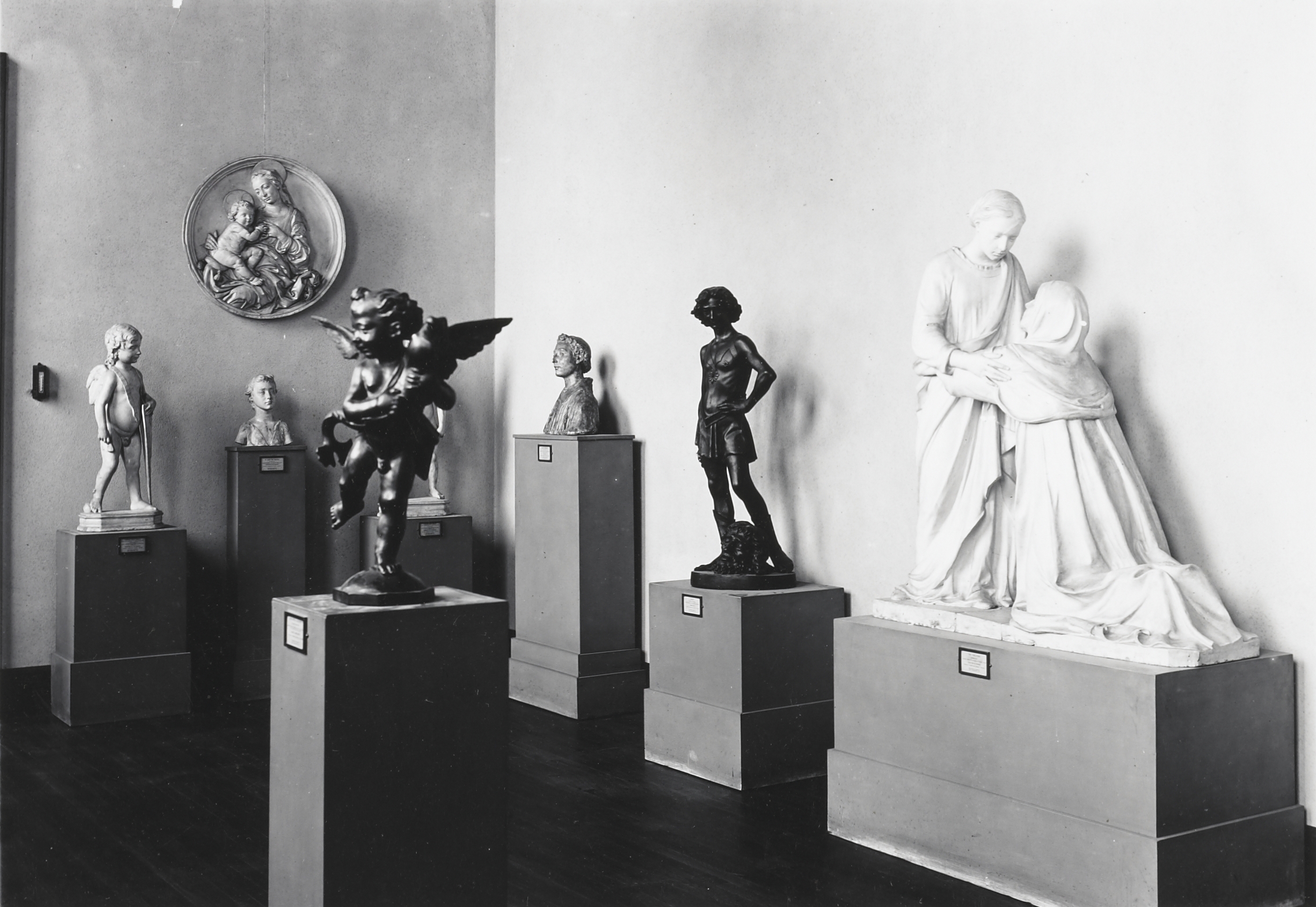A hundred years ago, they were a numerous if unusual species. Starkly beautiful, strangely familiar. Of this world and yet not completely; they seemed to inhabit a parallel universe. They were, as Mia’s first director, Joseph Breck, put it in a 1914 speech, “pale ghosts of reality.”
They were everywhere in Mia in the museum’s early decades, from the day it opened: plaster casts of great sculptures from ancient Rome, ancient Greece, and the rest of Europe. In the Renaissance galleries, the Medieval galleries, the Gothic gallery, the second-floor corridor, the rotunda (then known as the Octagonal Room). “The educational value of a cast collection is beyond question,” asserted Mia’s handbook to its collection in 1917. “Through these mechanical reproductions, it is possible to obtain a fairly adequate idea of the great masterpieces of sculpture that are inaccessible to many except in this form.”
Plaster reproductions, themselves an ancient art form, became fashionable in Europe in the 1800s, after Napoleon began making them of the few treasures he hadn’t managed to plunder. In the progressive spirit of the Victorian era, the value of gathering great works of the world seemed implicit, to “silently, but surely raise the standard of taste in the community,” as one British advocate put it. The Victoria and Albert Museum, in London, became a hub for the species when a prodigious collector—unable to build his own home for them—gave them to the museum en masse.
They began to multiply and migrate across the pond. They were relatively cheap, added instant cache—”See the great friezes of the Parthenon!”—and helped fill the vast new American museums built in the late 19th century. The Metropolitan Museum of Art, in New York, gave them a prominent habitat—its large front hall. The Art Institute of Chicago spread them throughout its galleries and classrooms. When the Portland Museum, in Oregon, opened in 1905, its collection consisted mostly of some 200 plaster casts.
The first art exhibition in the grand Minneapolis Industrial Exposition Building, in 1886, consisted entirely of 236 plaster casts on loan from the Met. Copies included the Venus de Milo and the Elgin Marbles.

Sculptures in the first exhibition in the Minneapolis Industrial Exposition Building in 1886—all plaster casts.
Mia opened, in 1915, just as plaster fever was beginning to wane in favor of originals. It had plenty of room to fill, however, and the lumber baron Russell Bennett (of the old Bennett Lumber yard in Uptown Minneapolis) sponsored the Russell M. Bennett Cast Collection at the museum. An order of casts from the Kaiser-Friedrich Museum in Berlin (now known as the Bode Museum) was placed the summer before the opening but arrived too late for the inaugural exhibition in January. They found their way into the galleries a few months later, including a cast of a Doryphoros figure (spear carrier) in a niche of the rotunda—where an original Doryphoros sculpture now stands.
Given the trends, Breck was already qualifying these acquisitions before they arrived. “A plaster cast is at best an unsatisfactory substitute for original material,” he said in his 1914 speech, in which he described the proposed design of Mia, “but it can be utilized far more effectively than is done in most museums.” Mia would not be assembling “vast quantities” of the ghosts, he said, only the best. They would be segregated from original materials and treated to resemble the original bronze or marble, enabling visitors to “gain a much more adequate idea of what the original sculpture resembles than is customary with the usual soiled white casts.”

A plaster cast of a frieze in Mia’s storage.
Still, they filled the museum, as shown here in photos from the 1920s. And then, starting in the 1950s, when the Met had long since banished its casts to storage and the Art Institute of Chicago was chucking its casts out the door as quickly as it could, Mia followed suit. They had never been anything but imposters, but where they were once seen as exotic emissaries from far-off lands they were now regarded as embarrassments. They had outstayed their welcome. They were outcasts.
Mia still displays some of its casts in its Villa Rosa meeting room and high up near the ceiling in the second-floor corridor. Some were enlisted as drawing aids in the studio room of the museum’s recent “Marks of Genius” exhibition. Other casts, long since de-accessioned but still hanging around, remain in storage. One statue looks out a window, peering at the HVAC on the roof.
They are not as simple as they appear, the Neanderthals of the art world, asserts Bill Skodje, Mia’s senior art preparator, a sculptor who has had a soft spot for plaster casts since his art training. It took a team of mold-makers to craft them, he says, to create the intricate details and a sense of fullness and volume. They may have been sold from catalogs in great numbers, but they were hardly chintz. Today, however, Skodje is among their few visitors, communing with the last survivors of a lost world.




